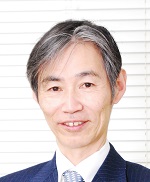Message from Kato, Tadafumi FOREST Program Officer
FOREST Program Officer:Kato, Tadafumi(Professor, Graduate School of Medicine, Juntendo University)

In the first three years of the Fusion Oriented Research for Disruptive Science and Technology, the Goda panel covered neuroscience and anthropology/genetics. This was an interesting combination, but for the fourth through sixth years, the focus is now on neuroscience and neuroscience-related clinical medicine (neurology, neurosurgery, and psychiatry). For this reason, we have asked for the cooperation of advisors who are experts in both basic and clinical sciences, as well as those who are conducting research that links the two fields. This has made it easier to target research that connects basic and clinical research in the field of neuroscience.
When it is stated that we are aiming for results that lead to disruptive innovation, one may imagine that the research must be on some outlandish topic. However, the results that lead to disruptive innovation that we seek in this panel refer to research results that cause a paradigm shift, which is to say, research results that make the previously commonplace things fall out of the norm. There are many recent studies that fall into this category, including advances in optogenetics, which has made it possible to manipulate the brain to elucidate causal relationships with behavior; nucleic acid therapeutics, which has turned neurodegenerative diseases that were thought to be incurable into curable diseases; and research showing that intracranial aneurysms, which were thought to be diseases that could be cured only with surgery, could be treated with drugs.
The important thing in such research is not to do trendy research with the goal of being published in a journal with a high impact factor, but to persevere with research that everyone really thinks should be done, but which takes time and does not progress easily. This project, which provides support for 7 years in principle and in some cases 10 years, is the best place to conduct such long-term research. We look forward to receiving applications from young researchers who wish to take the time to do the research that really needs to be done.

